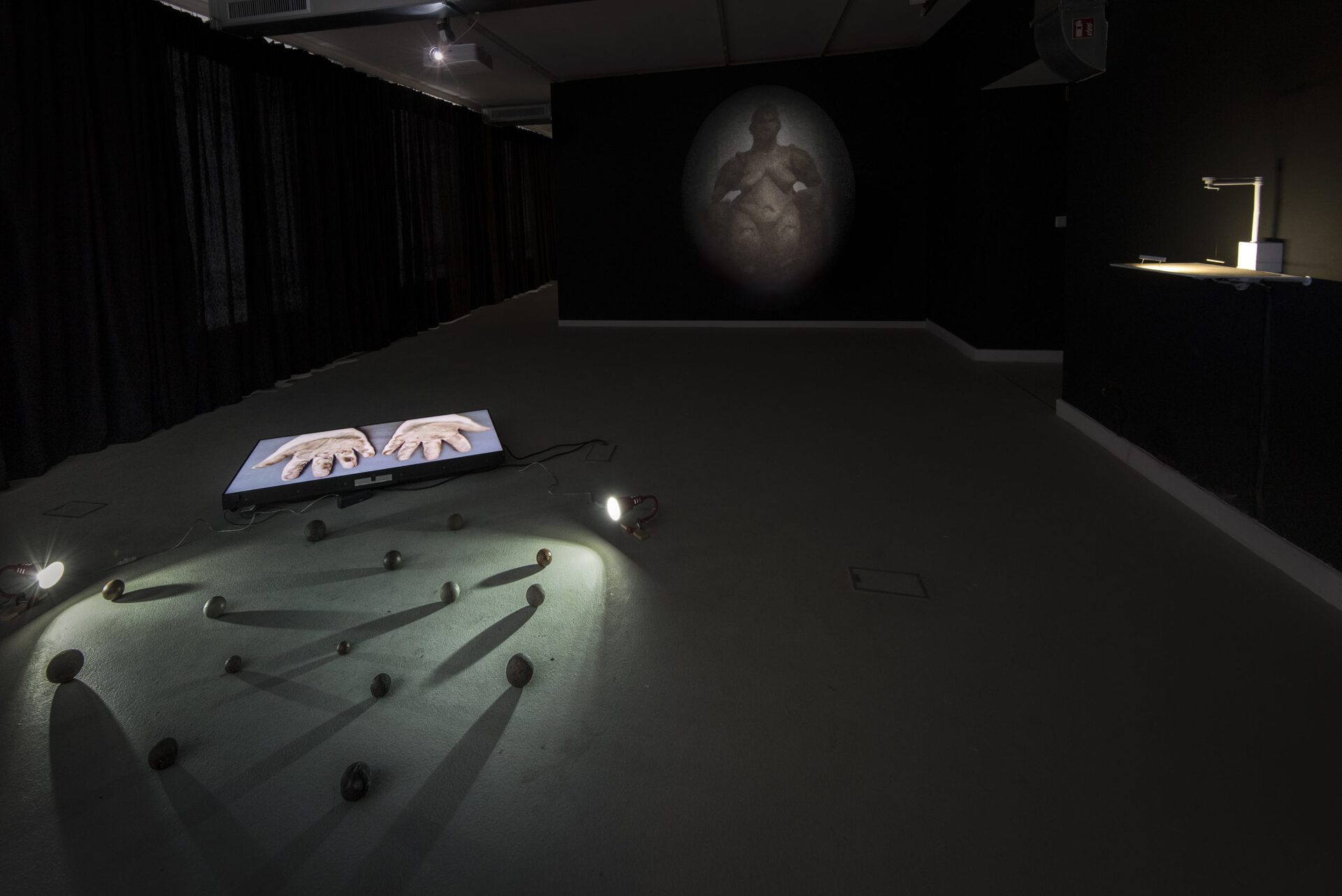Archive
2020
KubaParis
Shifting Patterns | Dönüşen Paternler - Sculptors from Turkey in Germany *1932 – 1986













Location
Galerie Nord | Kunstverein TiergartenDate
29.10 –26.02.2021Curator
Veronika Witte, Ayşe GüngörPhotography
Michael ZeehSubheadline
The exhibition presents seven sculptors from Turkey. Born between 1932 and 1986, they represent a wide variety of approaches to the question of how artistic dialogue results from a voluntary or forced geographical change. With Burçak Bingöl, Gülsün Karamustafa, Evrim Kavcar, Ekin Su Koç, Azade Köker, Yasemin Özcan and Yıldız Tüzün.Text
The exhibition Shifting Patterns | Dönüşen Paternler poses the question of whether and in which manner the experience of emigration and immigration has shaped the sculptural strategies of female artists from Turkey in the 20th and 21st century in terms of form and content. It presents sculptures, objects, ceramics and installations as hermetic and open sculptural forms in which the changing biography inscribes itself in the artistic strategy and materials.
The 60th anniversary of the German-Turkish recruitment agreement and the special history these countries share give reasons to examine this specific aspect of artistic production, which has received little attention so far and can be representative of various skills female artists acquired through migration. Changes of location have "consequences for the protagonists, their countries of origin and destination, [because] movement and mobility can mean loss and gain, homeland(s), languages, stories change [...]" and it can be assumed that experiences of migration have always released energies and led to new ideas, which is also evident within the district of Moabit: a district characterized by immigration and home to Galerie Nord | Kunstverein Tiergarten’s showroom.
But how does the change of geography with all its site-specific, social and political aspects influence the working methods, themes and careers of female sculptors? Have the different cultural codes, stories, and materials been mixed up in the works? Did migration itself become subject of their works? How have women artists used, infiltrated, deconstructed, and transformed stereotypes and attributions over the last 60 years? Are there motifs and themes of migration, depicting cultures of memory and historical references that could be explained by a non-German or, in this particular case, Turkish origin?
The seven selected sculptors, born between 1932 and 1986, share some aspects of their biographies and their art: the experience of changing places, their self-empowerment as artists and their international exhibition activities. Some of them immigrated to Germany in the 1960s, others have lived and worked here for a while or have close artistic contact with Germany. Their works focus on the use of classical materials such as ceramics, paper and textiles, which they partly expand with time-based and contemporary media such as video, film, performance or participatory strategies.
The little known non-representational sculptural work of sculptor Yıldız Tüzün, born in 1932, forms the chronological starting point of this exhibition and convinces with its sensual and minimalist rigor and consistency. The artist Azade Köker, born in 1949, with her large-format figurative sculptures made of clay and paper, is, along with Gülsün Karamustafa, one of the exceptional artists and pioneers of a decade, who, partly due to their education in the feminist awakening of the 1970s, have earned and fought for their visibility and recognition as young artists. They have shown that women artists, despite all the prejudices, stereotyping, and reduction to gender or ethnicity, have successfully worked on the development of contemporary art and thus paved the way for many of today's young internationally active female artists, such as Burçak Bingöl, Evrim Kavcar, Yasemin Özcan, and Ekin Su Koç, who are also presented in the exhibition.
Shifting Patterns | Dönüşen Paternler refers to more than just a movement or the transformation of patterns. The title symbolizes the shifting, drifting, or rearranging of life models and aesthetic patterns of action, which enter into a hybrid mixture with the geographical movement of people and initiate a cultural repositioning.
With the kind support of the district support funds, the Fund for Presentations of contemporary visual art of the Senate Department for Culture and Europe and the Stiftung Kunstfonds.
Veronika Witte